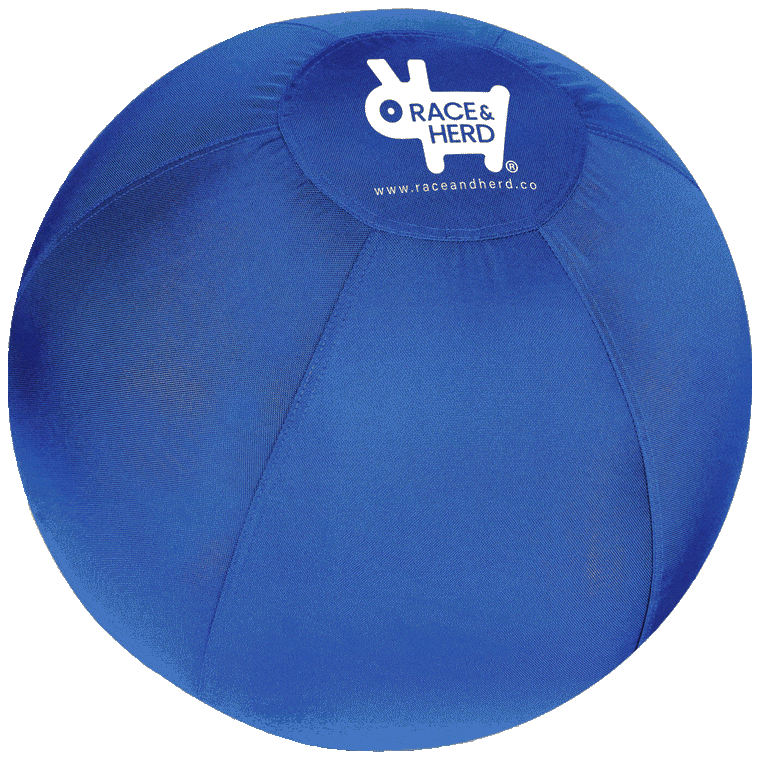Are you struggling with an overly aggressive herding dog? Many owners of breeds like Border Collies, Australian Shepherds, and Cattle Dogs face challenges with their pets' intense herding instincts and aggressive tendencies. But there's good news: herding balls can be a game-changer in managing these behaviors. In this guide, we'll explore how these simple yet effective tools can transform your dog's behavior and improve your relationship with your furry friend.
Understanding Herding Dog Aggression
Before we dive into the solution, let's understand the problem. Herding dogs were bred for a specific purpose: to control and move livestock. This instinct is deeply ingrained and can manifest as problematic behaviors when not properly channeled.
Common Aggressive Behaviors in Herding Dogs
- Nipping at heels
- Excessive barking
- Chasing cars or bicycles
- Herding family members, especially children
- Aggression towards other animals
These behaviors stem from the dog's natural instincts but can become problematic in a domestic setting. That's where herding balls come in.
What Are Herding Balls?
Herding balls are large, durable balls designed specifically for herding breeds. They're typically made of tough plastic or rubber and are much larger than regular dog toys. The Race&Herd brand offers some of the best herding balls on the market.
Key Features of Herding Balls:
- Large size (usually 10-14 inches in diameter)
- Durable construction to withstand rough play
- Unpredictable movement when pushed or chased
- Safe for both indoor and outdoor use
How Herding Balls Help Manage Aggressive Behaviors
1. Redirecting Herding Instincts
Herding balls offer a safe outlet for herding behaviors, helping to reduce problematic behaviors like nipping and chasing.
2. Mental Stimulation
The unpredictable movement of a herding ball engages your dog's problem-solving skills, keeping their minds occupied and reducing frustration-based aggression.
3. Physical Exercise
Chasing and controlling a herding ball provides excellent physical exercise, which can significantly reduce overall aggression.
4. Stress Relief
Herding the ball can be incredibly satisfying for your dog, reducing stress and aggressive behavior.
5. Positive Reinforcement Tool
Herding balls can be used as a reward during training, reinforcing good behavior and providing a constructive alternative to aggressive actions.
Implementing Herding Balls in Your Dog's Routine
Step 1: Choose the Right Ball
Select a high-quality herding ball. Consider your dog's size and strength when choosing a ball.
Step 2: Introduce the Ball Gradually
Start by letting your dog sniff and investigate the ball, then roll it to pique their interest.
Step 3: Establish a Play Routine
Set aside dedicated time for herding ball play, like 15-20 minutes in the morning or multiple short sessions throughout the day.
Step 4: Use as a Training Tool
Incorporate the herding ball into your training sessions as a reward for good behavior.
Step 5: Monitor and Adjust
Pay attention to how your dog interacts with the ball and adjust playtime as needed.
Success Stories: Real Dogs, Real Results
Case Study 1: Max the Border Collie
Max had a habit of nipping at heels and chasing cars. After introducing a herding ball, his nipping behavior reduced by 80% within two weeks, and car chasing incidents decreased significantly.
Case Study 2: Bella the Australian Shepherd
Bella was aggressive towards other dogs during walks. Regular herding ball sessions reduced her reactivity and improved her focus on her owner.
Combining Herding Balls with Other Training Techniques
While herding balls are effective, they work best as part of a comprehensive training approach that includes positive reinforcement, socialization, and obedience training.
Addressing Common Concerns
Concerned that using a herding ball might encourage your dog to chase other round objects? With proper training, your dog will learn that the herding ball is the designated object for these activities, helping to manage their instincts constructively.



